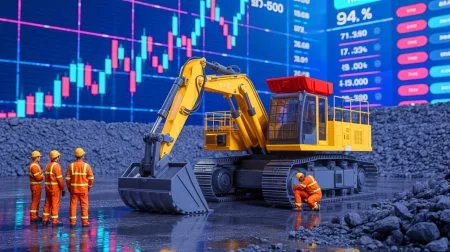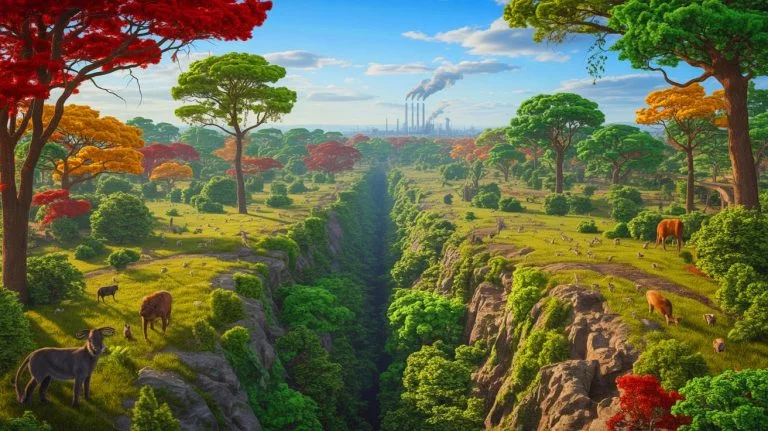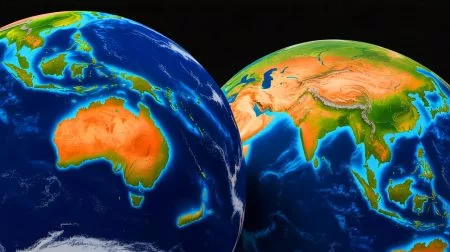| IN A NUTSHELL |
|
The concept of the Anthropocene has sparked considerable debate among scientists and researchers. While not officially recognized as a geological epoch, the term serves as a useful marker for the era in which human activities have significantly impacted Earth’s climate and ecosystems. Tracing the origins of this epoch has led to various theories, with some experts pinpointing its beginnings as early as the 17th century. Recent research, however, suggests that the Anthropocene may have started even earlier than previously thought, shedding new light on the deep-seated connections between humans and the environment.
The Controversial Birth of the Anthropocene
The term “Anthropocene” has emerged as a controversial yet widely used shorthand to describe the epoch during which human actions have globally affected the planet. Despite its rejection as a formal geological epoch, its conceptual value is indisputable. Scientists have long debated when exactly this human-dominated epoch began. Proposed dates range from the early 1600s, marked by significant European exploration and colonization, to the mid-20th century, when atomic weapons were first detonated. The period’s beginnings have been tied to key environmental changes, such as the “Orbis spike” in CO₂ levels, which corresponds with European arrival in the Americas.
Simon Lewis and Mark Maslin, Earth systems scientists from University College London, first introduced the idea of the Orbis spike in 2015. Their research indicated a sharp drop in CO₂ levels around 1610, suggesting increased forest regrowth in the Americas following the demographic collapse due to disease. This event marked a turning point where human activities began to leave a discernible imprint on the global environment, offering a potential marker for the start of the Anthropocene.
New Insights from Methane Concentrations
Recent studies into atmospheric methane concentrations have added another layer of complexity to the narrative of the Anthropocene’s origins. Methane, a potent greenhouse gas, is 80 times more effective than carbon dioxide over a 20-year period. However, it has a relatively short atmospheric lifetime of under ten years, making it highly responsive to changes. Ice core records have proven invaluable in tracing these changes and identifying significant shifts in atmospheric composition.
Research conducted by Vincent Gauci and his team points to a minimum in atmospheric methane concentrations in 1592, precisely 100 years after Columbus’s arrival in the Americas. This finding suggests that the Anthropocene may have commenced earlier than previously believed. The decrease in methane levels is attributed to the regrowth of forests on abandoned farmland, which increased the surface area for methane-absorbing microbes to interact with the atmosphere. This aligns with the hypothesis proposed by Lewis and Maslin and underscores the significant role that forest dynamics play in global methane cycles.
The Role of Forests in Methane Exchange
Forests, particularly those growing on free-draining soils, play a critical role in the exchange of methane with the atmosphere. While trees may appear biologically inert compared to other plant parts, their woody bark surfaces are vital interfaces for methane exchange. In forested floodplains and swamps, trees act as conduits for methane release from saturated soils, where it is produced by anaerobic microbes.
However, forests also have the capacity to remove atmospheric methane, thanks to specific microbes that colonize tree surfaces. The regrowth of forests following European colonization likely enhanced methane uptake, contributing to the observed drop in atmospheric methane concentrations. Additionally, increased evaporation and transpiration due to more extensive forest cover may have reduced water flow into wetlands, further limiting methane emissions from these areas. These interconnected processes highlight the intricate relationships between forests, methane, and climate.
Reevaluating Human Impact on the Environment
The ongoing debate about the start of the Anthropocene reflects broader questions about humanity’s relationship with nature. Evidence from ice cores suggests that human influence on the environment predates industrialization, extending back to early agricultural practices approximately 5,000-8,000 years ago. This ancient interaction between humans and the environment offers valuable insights into the enduring impact of human actions.
Researchers like Vincent Gauci and Peter Hopcroft continue to explore these dynamics, using paleoenvironmental modeling to better understand the processes at play. As we uncover more about past human-environment interactions, it becomes increasingly clear that our species has had a profound and lasting influence on the natural world. This realization prompts reflection on how we can navigate our future in a manner that respects and preserves the intricate balance of Earth’s ecosystems.
As we ponder the implications of the Anthropocene and its origins, we are faced with pressing questions about our role in shaping the planet’s future. How can we leverage our understanding of past human-environment interactions to forge a sustainable path forward, ensuring the health and resilience of Earth’s ecosystems for generations to come?
Did you like it? 4.4/5 (26)








This is shocking! How can they not recognize the Anthropocene as an official epoch? 🤔
The article was very insightful! Thanks for shedding light on the importance of forests in methane exchange. 🌳
Does anyone else find it ironic that we’re debating the start of an epoch while we might be ending others?
Why is formal recognition of the Anthropocene so controversial among scientists? Wouldn’t it just make things clearer?
Great article! But I still wonder, why is the start date so hard to pin down?
Are we sure about those methane concentrations from the 1500s? Seems like a stretch to me. 🤷♂️
Thank you for this deep dive into such an important topic! More people need to understand this. 🙌
Wait, so trees are like the lungs of the Earth, but for methane too? Wow!
This is just another example of scientists arguing over semantics. Move on, people!